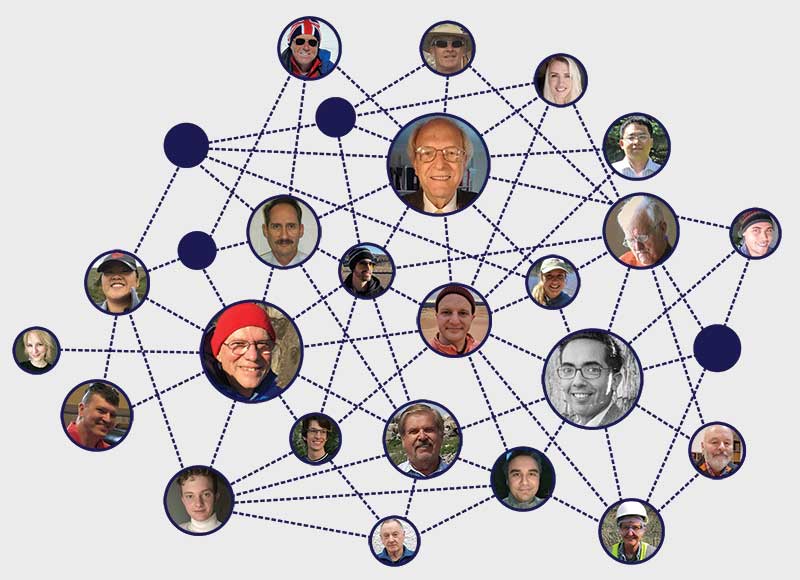 Aerocapture by Sun and Planets
Aerocapture by Sun and Planets
Since MQNs should be indestructible, can their passage through the Sun slow them down enough to make them collectable?
 Aerocapture by Sun and Planets
Aerocapture by Sun and Planets
Since MQNs should be indestructible, can their passage through the Sun slow them down enough to make them collectable?

MQN Guide
Much like GPS guides one along a pathway to a destination, we present 8 “waypoints” of relevant information to guide readers through the overall concept.
Peer Reviewed Science
Is there solid science supporting Magnetized Quark Nuggets as a candidate for dark matter?
Dark Matter
Tell me about dark matter and the Standard Model of Cosmology.
Normal Matter and Quarks
Tell me about normal matter, quarks, and the Standard Model of Particle Physics.
Quark Nuggets and Magnetar Pulsars
What do Magnetar Pulsars have to do with Quark Nuggets?
Aggregation vs. Decay
Since Quark Nuggets are not observed in high-energy accelerator experiments, aren’t they excluded as stable particles and therefore cannot be dark matter?
Detection
If MQNs exist, how can they be detected and have they been detected?
Capture
Since MQNs should be indestructible, can their passage through the Sun slow them down enough to make them collectable?
Applications
If MQNs can be collected, what applications might they enable?

People Make Progress
Even with a target as large as the magnetosphere, the event rate may be marginal unless MQNs are accumulated in the solar system by passing through the limb of the Sun’s photosphere and subsequently scattering in the planetary gravitational field, as illustrated in the figure. Preliminary calculations indicate that such aerocapture is possible, but detailed calculations are needed to estimate the enhancement factor and corresponding event rate.

MQNs streaming into the solar system from interstellar space are too rare and are moving too fast to be collected with current technology. However, accumulated MQNs would be more common and be moving more slowly, thus facilitating collection for applications.
MQN Guide
Much like GPS guides one along a pathway to a destination, we present 8 “waypoints” of relevant information to guide readers through the overall concept.
Peer Reviewed Science
Is there solid science supporting Magnetized Quark Nuggets as a candidate for dark matter?
Dark Matter
Tell me about dark matter and the Standard Model of Cosmology.
Normal Matter and Quarks
Tell me about normal matter, quarks, and the Standard Model of Particle Physics.
Quark Nuggets and Magnetar Pulsars
What do Magnetar Pulsars have to do with Quark Nuggets?
Aggregation vs. Decay
Since Quark Nuggets are not observed in high-energy accelerator experiments, aren’t they excluded as stable particles and therefore cannot be dark matter?
Detection
If MQNs exist, how can they be detected and have they been detected?
Capture
Since MQNs should be indestructible, can their passage through the Sun slow them down enough to make them collectable?
Applications
If MQNs can be collected, what applications might they enable?

People Make Progress
Even with a target as large as the magnetosphere, the event rate may be marginal unless MQNs are accumulated in the solar system by passing through the limb of the Sun’s photosphere and subsequently scattering in the planetary gravitational field, as illustrated in the figure. Preliminary calculations indicate that such aerocapture is possible, but detailed calculations are needed to estimate the enhancement factor and corresponding event rate.

MQNs streaming into the solar system from interstellar space are too rare and are moving too fast to be collected with current technology. However, accumulated MQNs would be more common and be moving more slowly, thus facilitating collection for applications.
Even with a target as large as the magnetosphere, the event rate may be marginal unless MQNs are accumulated in the solar system by passing through the limb of the Sun’s photosphere and subsequently scattering in the planetary gravitational field, as illustrated in the figure. Preliminary calculations indicate that such aerocapture is possible, but detailed calculations are needed to estimate the enhancement factor and corresponding event rate.

MQNs streaming into the solar system from interstellar space are too rare and are moving too fast to be collected with current technology. However, accumulated MQNs would be more common and be moving more slowly, thus facilitating collection for applications.
MQN Guide
Much like GPS guides one along a pathway to a destination, we present 8 “waypoints” of relevant information to guide readers through the overall concept.
Peer Reviewed Science
Is there solid science supporting Magnetized Quark Nuggets as a candidate for dark matter?
Dark Matter
Tell me about dark matter and the Standard Model of Cosmology.
Normal Matter and Quarks
Tell me about normal matter, quarks, and the Standard Model of Particle Physics.
Quark Nuggets and Magnetar Pulsars
What do Magnetar Pulsars have to do with Quark Nuggets?
Aggregation vs. Decay
Since Quark Nuggets are not observed in high-energy accelerator experiments, aren’t they excluded as stable particles and therefore cannot be dark matter?
Detection
If MQNs exist, how can they be detected and have they been detected?
Capture (above)
Since MQNs should be indestructible, can their passage through the Sun slow them down enough to make them collectable?
Applications
If MQNs can be collected, what applications might they enable?


